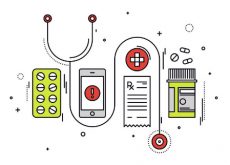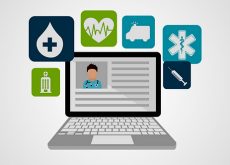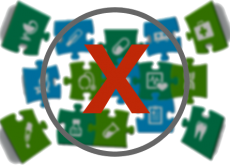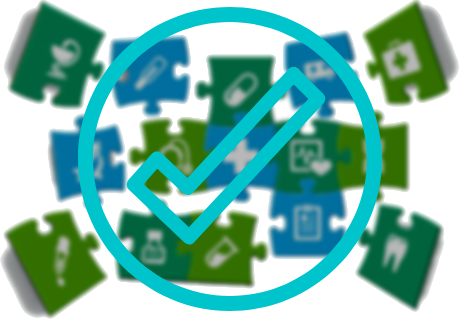Ever since the early days of Health Information Technology, industry experts and observers have discussed the potential of using technology to improve patient care, reduce costs, share information, and increase patient satisfaction. Has Healthcare IT succeeded in these goals? This post is the first of two articles to highlight the successes and failures of Healthcare IT. Being the optimist that I am, I decided to start with the areas where Healthcare IT has produced qualified and substantial results. At the end of this article is the other side of the story: what is not working well in Healthcare IT.
Advantages Of Electronic Medical Records
It wasn’t too many years ago when medical records were kept entirely in binders with tabs to separate the sections. To their benefit, paper charts usually followed a standard organizing practice so that it was easy to find written progress notes, orders, medications, and medical history. Beyond that, they were overall pretty horrible in lots of ways:
- Only one person could update a chart at any time
- There was no efficient way to share medical records between clinicians, even within the same organization
- Healthcare organizations each had their own copies of paper charts for each patient, so there was no way of validating the accuracy of medical information in any of them
- Paper records were cumbersome to store and retrieve over time
- Paper records could easily be lost in the event of natural disasters, vandalism, or terrorist attacks
- Patients could not easily view or add to their medical records
While there were early versions of electronic medical records systems in the 1970s, widespread use didn’t happen in most healthcare settings until the 1990s. Even then, adoption was inconsistent and fragmented until the HITECH Act of 2009. That legislation provided incentives to get most providers in the U.S. onto EMR systems by 2015. As with about any government stimulus program, HITECH has had its challenges and critics. However, looking at what it was intended to do, HITECH was absolutely a success. By 2015, about 87% of physicians were on some kind of EMR. That number is closer to 90% today. Some of the benefits that have been seen with widespread adoption of EMRs are:
- Order and prescription entries are no longer prone to legibility issues that came with paper documentation
- More than one clinician at a time can view a patient chart in the clinical setting
- Backups of electronic records eliminate the risk of destruction that came with paper records
- EMR connected patient portals allow patients to communicate with their providers, view and update medical information, and pay bills
- Providers can access medical records from remote computers or from mobile devices
- Medical data is being analyzed to predict outcomes, manage large populations of patients, and identify problem areas
Today’s technology allows a healthcare organization to instantly identify all patients on a particular med and print notification letters in the event of a drug recall. Can you imagine doing that for thousands of patients manually?
Benefits of E-Prescribing
Electronic prescribing of medications is another measure that has followed similar trends as the adoption of EMRs. Just a decade ago, the majority of prescriptions were hand-written, with the vast majority now being transmitted electronically to pharmacies. When e-prescribing was initially implemented, the technology did not support the transmission of controlled substances such as Oxycodone. As of 2017, about 77% of controlled meds and 90% of non-controlled meds were electronically prescribed. Some of the benefits of electronic prescribing are:
- Mistakes from handwriting errors are eliminated
- Paper prescription pads carried a high risk of theft
- Delays in filling prescriptions are reduced
- Data can be analyzed to determine drug effectiveness, side effects, and other data
- Drug interactions and allergy checking are done in real-time when medications are prescribed
In a National Institutes of Health study, e-prescribing errors were reduced nearly sevenfold in a community based practice setting.

Read More
Patient Engagement in Healthcare
Thanks to the internet, (for good or bad) patients are much more engaged in their healthcare than ever before. “Dr. Google” aside, we have more healthcare IT tools to help patients to better manage their health. As of 2017, the ONC reported that about 52% of patients in the U.S. use a patient portal to communicate with their physician. Some of the engagement benefits of using a patient portal are:
- Faster turnaround of messages between patients and providers
- Efficient review of test results
- Increased adherence to medication schedules and treatments
- Greater efficiency in scheduling
- Increased patient satisfaction
- Easier communication to patients when physicians are unavailable
- Ability for patients to enter vital signs and other health information that a provider can access
- Ability to harvest data from devices such as Fitbits
The average family doctor has over 2000 patients under his or her care, and sees an average of around 20 each work day. Healthcare IT has helped to break down the barriers between providers and patients by making it easier for high-paid physicians to communicate clearly and quickly with lots of patients. When patient portals first started ramping up, most providers were very skeptical about opening themselves up to an email-like messaging system. Ask any physician today if they would rather deal with a bunch of phone messages, or electronic communications every day. All the physicians I know would never go back to the days before patient portal communications.
Benefits of Population Health
Population Health is defined as the process of managing the clinical outcomes of a group of patients. A provision of the Affordable Care Act (Obamacare) established a new voluntary entity called an Accountable Care Organization in which healthcare organizations team up with insurance companies and other entities to measure the health outcomes of a specific group of patients. The key here is that some of the payments to providers is based on those very outcomes, as opposed to the traditional fee-for-service model. ACOs then reap some financial rewards from Medicare for better patient outcomes, but could pay penalties for poor patient outcomes. It takes sophisticated technology to track population health patients and manage outcomes. When it works well, we see what Medicare reported for 2017. For the year, ACOs saved Medicare a net $314 million. Some of the other benefits of population health are:
- Ability to precisely identify patients who are in the highest risk categories. This is important because a very small percentage of patients use the largest share of healthcare services and dollars
- Healthcare IT population health tools allow clinical case managers to focus on preventive care, reducing unnecessary emergency room visits
- Population health reports allow clinicians to quickly print letters to multiple patients, or reach out to multiple patients using a patient portal connected to an EMR system
Health Information Exchanges
While healthcare organizations have benefited from electronic medical records systems, these systems were not originally designed to communicate with each other, or across geographic regions. This meant that most patients’ records- although they were digital, they were still fragmented. Health Information Exchanges have begun to close that gap, allowing competing EMR systems to follow the same standards to exchange information across technology platforms, healthcare organizations, and regions. Two of the largest HIEs, Carequality and CommonWell have started to work together to share clinical data.

Read More
Drug Diversion in Healthcare Settings
We’ve all heard stories of medical workers stealing drugs, or worse- contaminating drugs meant for patients. I was not able to find good statistics on diversion, and if technology has had an effect on the situation. However, I do believe that automated dispensing systems and reporting capabilities make it a lot harder to get away with than in the days of paper records and physical lock & key systems. I was once called on to provide prescription data to help authorities nail someone who likely was diverting narcotics.
Hospital Supply Chain Management
Before sophisticated materials management systems came along, hospitals had peel-off stickers affixed to the supplies stored on the nursing floors. When a nurse used a supply item, the sticker would be removed from the supply and put on a paper form in the patient’s chart. At the end of the day, the ‘charge sheets’ were passed to data entry staff who typed the supply codes into a billing system for processing. It was common to see nurses walking around with several of these stickers stuck to their uniforms. This was a very cumbersome and inefficient system, prone to lost charges and a lack of useful data on supply usage.
Now we have systems like Omnicell, which automate the entire supply process from the supplier all the way to billing and reordering. Lots of hospitals have seen an increase of 45% in charge capture and have the ability to keep just the right amount of stock on-hand.
Next Up: What Is Not Working Well in Healthcare IT

Read More



